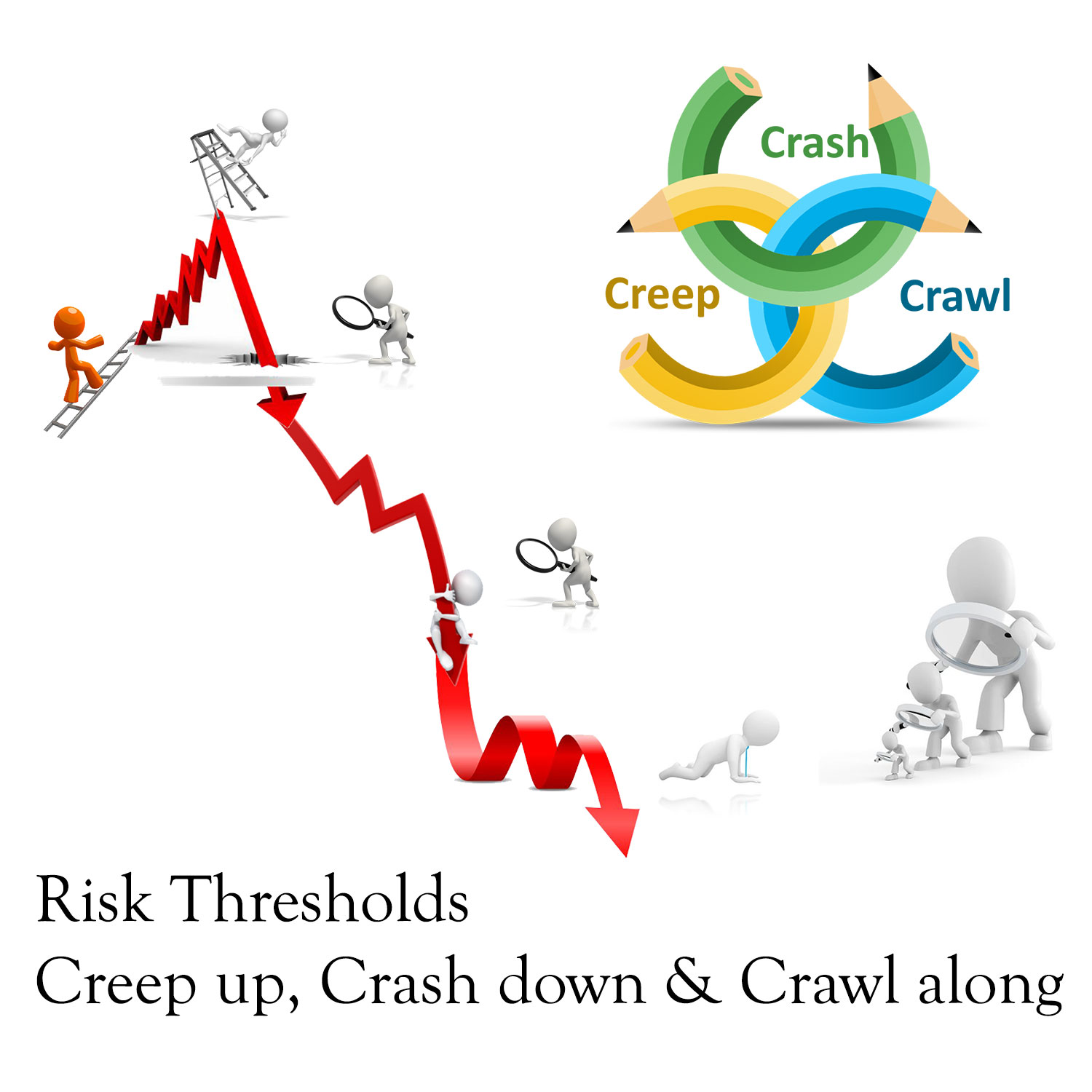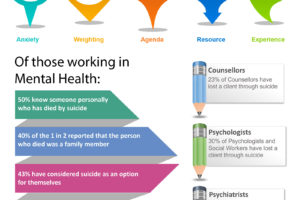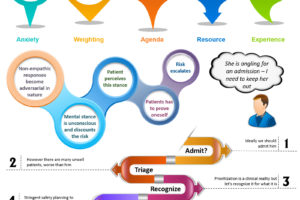
19 | Creep Crash Crawl
- Posted by Manaan Kar Ray
- Categories Weekly PROTECT Podcast
- Date June 10, 2022
Transcript
Host: Good day, this is Mahi, your host, we are on to episode 19. Over April and May we have seen a big surge in our listening audience, so thank you to all of you who have helped spread the word.
Expert: Thank you indeed, we have set ourselves a life goal of bringing progress to practice of one million health care workers, equipping health care workers with the skills and competencies that they need to support people in suicidal distress is essential to transform frontline care delivery. The number is quite arbitrary and varies from 1 to 10 million based on how strong I am feeling. Its something that we refer to as our Everest, the point is, that no way can we reach new horizons without your support. Along with all the training courses we run, the podcast is perhaps the most influential, its free, provided in bite size chunks and people can listen to it while they are driving. So, thank you for being part of our effort, keep sharing the episode links in your whatsapp groups or facebook or twitter or any other social media platforms that you use.
Host: And if you haven’t subscribed yet please do so. Rate us and review us, it all helps to grow our audience. I think Manaan with the new comprehensive programs for schools and workplaces you may have to redefine the population as its no longer healthcare workers.
Expert: That’s true actually, we now have a fully fledged program for the educational sector, schools and universities. You all might have seen the article in the Guardian about the University of Bristol being sued under the Equality Act by the parents of Natasha Abrahart. It’s a really tragic story, Natasha who was 20, a Physics undergraduate and suffered from severe social anxiety died a day before she was due to give a terrifying oral exam in front of teachers and fellow students. Between 2016 to 2018, Natasha was one of 11 University of Bristol students to take their life in a 3 year window. Since then though the University has done a lot of work to address mental health challenges in the student body.
Host: Was it 2020 when you delivered the PROTECT training for University of Bristol?
Expert: I think it was, really engaged, very keen to learn, you could see their desire to do their very best for their students. It is really sad what has happened but maybe this court ruling will draw more attention to the gap that exists.
Host: I have heard the term called “missing middle” being used, not so unwell to need secondary care but too unwell for primary care or university counselling services.
Expert: I think Uni and school students could easily fall into that group and one can see how uni students can get very isolated, away from home and family, strong themes of shame or guilt if they are not able to perform, the stigma of mental illness, mixed with alcohol and recreational substances and throw in a bit of impulsivity and how easy it is to get perilously close for the suicidal ideation – action divide to close.
Maybe more universities and schools will take notice following Natasha’s story becoming public and there will be more support for the missing middle.
One of the ways in which we can support the missing middle is through skills enhancement. We got PROTECT (ED), ed to designate the educational sector, so PROTECTed is for school and university counsellors, with Bristol we covered a lot of content which even experienced mental health professionals will not have in their knowledge base or skill set, through the right training you can genuinely help counsellors build their assessment and safety planning skills, we also have LIFE is for teachers, lecturers and professors so they can spot things early and engage students in conversations that are supportive and PEARLS for students themselves to support their resilience and wellbeing. Together the comprehensive program is PROTECT LIFE PEARLS which has a nice ring to it, certainly our schools and universities serve as the oysters where tomorrows pearls, our future gets polished and fashioned. In the polishing there is a fair bit of friction which can create emotional pain, but this can be addressed through appropriate training and we owe it to these learning institutions to create an environment of positive mental health so that students can thrive and flourish. So you are right, maybe our Everest should be 10 million rather than 1.
Host: Whatever the number maybe we cant get there without your support, so please keep doing what you are doing, cause its working.
Expert: We have completely digressed and gone off at a tangent, anyway thank you to all our listeners for the support
Host: So, for the last few episodes we have been systematically working our way through the AWARE framework, A for Anxiety, W for Weighing, A for Agenda, R for Resources and E for experience. We learnt about the rational and rationalising mental spaces from the AWARE qualitative study. Putting it simply we see what we want to see, if a practitioner makes up their mind about what the best outcome is for the patient very early in the assessment process, then that skews the assessment in terms of the information that is collected, certain bits of the information get more weighting than others which then ultimately impact the clinical decisions that are made. Being aware of the mental space in which one is operating is crucial for mindful practice and decision making. In the last episode we had an in depth discussion about experience and how past events particularly the loss of a patient or a loved one to suicide can impact how we approach a clinical scenario. The challenges of sticking to the facts of the individual presentation in front of the assessor multiplies many folds because of the emotional undertones of past adverse events. It is not difficult to see how one can get into a rationalising space if there are strong feelings or opinions about a particular patient or patient type based on diagnosis or demographics. Remember you can find the show notes, figures and images at www.progress.guide or in the PROTECT guidebook available at Amazon. Today we are going to build on the discussion on experience and introduce you to a phenomenon called CREEP CRASH CRAWL. Manaan what is creep, crash crawl?
Expert: We are going to gradually reveal what this is, so please humor me and play along. Let’s Imagine you are putting on 50 grams in weight every single day. When you look in the mirror what do you think you will see.
Host: That I am putting on weight.
Expert: Will you though? Chances are you will see exactly what you saw yesterday and the day before that. 50 gms dissipates all over the body and will be imperceptible to the human eye.
Host: Of course, slow but steady changes are not that easy to spot.
Expert: Exactly but if a friend who hasn’t seen you for a year bumps into you at the airport they will see that you have put on over 18 Kgs in weight. 50 gms times 365.
Host: Now that will be noticeable, I guess a bit like images from a few years back on Instagram timeline or facebook memories, they often tell a tale of weight that has crept up.
Expert: That’s correct, if you are not one for perceiving human emotions like your friend being surprised and trying to be polite and not talk about weight, the social media posts over time will capture the increase. To cut a long story short spotting slow but steady changes demands a degree of mindfulness.
Host: Is this about gradual creep in risk thresholds.
Expert: Patience madam, we are getting there. Now let’s imagine a step change, say you sign up for an ironman competition and on day one of training, 18 bricks each weighing 1 Kg is put on a rucksack and you are told to get on a treadmill with it.
Host: They will not do that.
Expert: You are right they wont but why do you think that is.
Host: Because unless you are superfit that will be too much to carry around.
Expert: I cant speak about others, but I know that my knees will come crashing down and I will think twice before putting on that weight on my shoulders and walking, however I am pretty certain that if the weight of 18 kgs was added at the rate of 50 gms a day, I would be carrying it around with me without a thought. Of course then I am setting myself up for a different kind of crash as my coronaries will get quoted up with cholesterol.
Host: Ok so a slow gradual increase, one will not notice, but a sudden step change I will notice
Expert: In fact, a step change like that whether that be 18 kgs on my back or a heart attack following years of slowly increasing atherosclerosis will makes us hyper aware of the change phenomenon
Host: I think I have a sense of where you are going with this. So how is this relevant to suicide risk assessment.
Expert: We learnt in the AWARE framework how our clinical decision making is influenced by experience. Every time we take a risk and there is no adverse clinical outcome our risk taking creeps up ever so slightly. This shift is almost imperceptible.
Host: So, when things go all right it is a signal to our amygdala that it was OK to take that risk,
Expert: Unfortunately, it was ok, not because the risk was acceptable but because suicide is a rare phenomenon. Sometimes there are near misses and our risk taking fluctuates but over time there is a slow but steady increase. Some might say that is just confidence gained through experience, but the truth is, every non-event in terms of adversity following an assessment ever so slightly pushes up our risk taking.
Host: So that is the creep, what is the crash
Expert: It is only a matter of time that our risk taking would have risen to the extent that a crash is imminent. We have spoken about this in the past, that there are only two groups of professionals in mental health care, those who have had a suicide and those who are going to have one. It is sad but true as without risk there is no recovery and the very nature of the work demands that we take risks to help people move forward in their recovery journeys, however if our risk taking has been gradually increasing we are set up for an inevitable fall.
Host: So, when there is a suicide, that signifies the crash?
Expert: Yes, our risk taking threshold does come crashing down, partly because as practitioners we are conscientious and try very hard to work out where we went wrong and how we did not see that coming as countless others like that had not done anything like this and partly because suicides are followed by reviews and investigations which even in their kindest forms feed into the guilt and soul searching most practitioners are experiencing anyway.
Host: Almost like a threat response
Expert: Yes you mentioned the amygdala before, so understandably following a serious untoward incident the amygdala is activated and practitioners get incredibly risk averse and our risk taking threshold goes through the floor.
Host: Ah so is this the crawl phase.
Expert: Exactly, practitioners become defensive in their practice and worry that they are under scrutiny and big brother is watching over their shoulder. This is not a particularly helpful scenario for the people the clinician is supporting as practice could become fairly prescriptive and restrictive and generally stifles growth and recovery in people.
Host: So, what needs to happen?
Expert: Well, if one encounters a clinician in the crawl phase following an untoward incident, there has to be support for practitioners to stand on their two feet again, it is important that organisations create a learning environment in which lessons are learnt without blame, in line with ‘just culture’ proposed by initiatives like zero suicide.
Host: So, when you pull all that together we have the phenomenon of creep crash crawl.
Expert: Yes, risk taking gradually creeps up, followed by a crash because it has silently crept up due to suicide being a rare phenomenon and when the crash happens there is a period of crawl before practitioners can get back on their two feet and act with confidence. In our day to day life there are many examples of creep crash crawl, for example over the last 300 years the size of wine glasses have slowly but steadily increased in size, part of the jigsaw of how modern society interacts with alcohol. In the 1700s wine glasses were 70 mls, now the average wine glass is 450 mls, that is more than 6 times. One can see parallels at the individual level as to how increasing alcohol consumption gets normalised over time till there is a crisis as the person’s mental health crashes.
Host: And it does takes them a while to get back on their feet.
Expert: If you are talking about risk and societal issues, think about the global financial crisis. That too is also a good example where the risk taking by markets in terms of mortgages had steadily increased over the previous two decades from 70% mortgages to 105% with cashback, when the market innovates and some bank created a 80% mortgage when the norm was 70, the whole industry chased that innovation and before you know the norm became 80 and then someone pushed the risk up again to 90 and so it went till you ended up with 105% mortgages with cashback. It was inevitable that the housing bubble had to crash. New words entered our vocabulary – subprime loans. Following the crash there was considerable scrutiny and it took a while for the financial institutions to get back on their feet and in fact even a decade on risk taking was low, we saw that at the beginning of the pandemic but then things have loosened up with lending again.
Host: In your training course you talk about a frog being put in a beaker and the Bunsen burner being slowly but steadily turned up,
Expert: Yes, that image actually always brings out a laugh, not for the frogs though, it is actually possible to boil a frog alive as it does not react to the temperature creeping up. However if the same frog was dropped into a beaker of boiling water it will jump straight out.
Host: We have been talking in metaphors, lets make it concrete for our listeners.
Expert: Of course, you all know from the AWARE Qualitative study about the significant impact of the professional experience of suicide on clinical decision making (Lombardo et al 2019). Following the loss of a patient, professionals often struggle with positive risk taking as their confidence is quite low. However, to fully understand how experience fashions clinical practice one has to examine the preceding step. Carter and Spittal (2018) cite how clinical experience in low prevalence disorders encourage confirmation bias. Given suicide is a rare outcome, every time post assessment a risk is taken without an adverse event, risk taking creeps up ever so slightly. This shift is almost imperceptible. Assessors learn that clinically it was the right decision. However, nothing happened not because the risk was acceptable but because completed suicide is fortunately a rarity. So risk taking gradually CREEPS UP.
Sometimes there are near misses and risk taking fluctuates but over time there is a slow but steady increase. Some might say that is just confidence gained through experience, but the truth is, every non-event in terms of adversity following an assessment ever so slightly pushes up risk taking. It is only a matter of time that in our clinical practices risk taking would have risen to the extent that a suicide is imminent. When such an eventuality does happen we get to witness the CRASH DOWN.
Number of reasons for the crash down 1. mental health practitioners are fairly conscientious and try very hard to work out where they went wrong and how they did not see that coming. 2. Given countless others in suicidal distress had not acted and why this one 3. suicides are followed by reviews and investigations which even in their kindest forms feed into the guilt and soul searching most practitioners are experiencing anyway. So understandably following a serious untoward incident practitioners get incredibly risk averse and become defensive in their practice, worrying about being under scrutiny. So risk taking for a while CRAWLS ALONG.
Together we call this phenomenon Creep – Crash – Crawl. Risk taking gradually creeps up, followed by a crash and then a period of crawl before practitioners can get back on their two feet and act with confidence. PROTECT seeks to address this phenomenon through mindful reflective practice and specific tools that provide grounding for risk threshold.
Host: What are these specific tools?
Expert: We need proactive systems to be able to spot when our risk taking is creeping up as it leads us towards an inevitable crash. Something that we all want to avoid. In the next few chapters of the ASSESS module we will talk about a number of different interviewing strategies, Validity techniques as they are called, suicidal story telling is another and a combination of two called B4Now. When we talk about safety formulation, the DESPAIR framework, that would provide means to ground our risk threshold and not only make our practice safer but actually help us take positive risks and not engage in defensive restrictive care. All of these things we will cover in the coming weeks.
Host: This brings us to the end of episode 19. You need to stay tuned in to learn about these strategies in our future episodes. They might help stop the risk threshold from creeping up, crashing down and crawling along. Remember the show notes and images will be at the blog on www.progress.guide and you can get the PROTECT suicide prevention Guidebook from Amazon. There are number of online video courses as well. Pause and think about your risk taking after an adverse event, what happened, did you find yourself second guessing your judgement calls. What helped you get through that difficult stage. As mentioned after episode 18 which was on experience, do spend some time reflecting and looking in the rear view mirror. Reflection is an essential element of progress to practice. Share your musings with us. Tweet your thoughts about experience of or lack of and tag #GuideProgress. It helps get the word out about the podcast to more professionals. You can email your thoughts to us at admin@progress.guide with your suggestions and comments particularly if you have questions and want us to cover certain topics in the discussion. In the next episode, we will discuss some of the interactive exercises that relate to the AWARE framework from the PROTECT workbook. You can connect with Manaan on Linked in, or follow our linked in page by searching on linked in for progress.guide. We are also on twitter and YouTube. Our twitter handle is @GuideProgress. Helping healthcare professionals become aware of their risk taking thresholds is an essential step in creating a workforce that is self-aware. Remember together we can make a difference. Tune in next Friday and we will discuss key conversations with people living with borderline personality disorder and how the AWARE factors shape and influence the interactions. Thank you for joining us today and keep spreading the word.
You may also like

18 | AWARE 5 – Experience

G4 | Dr Miguel de Seixas ~ From Vietnam with Love

